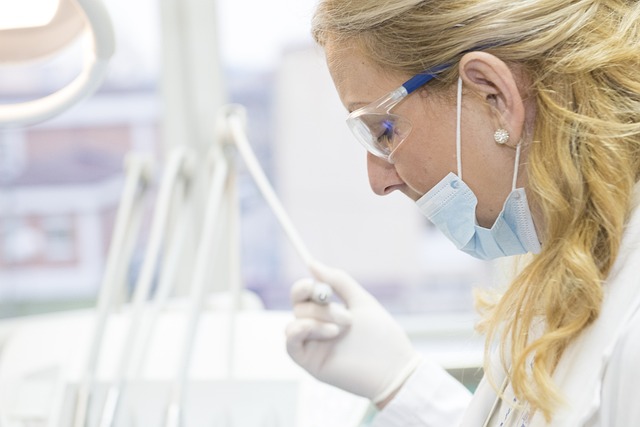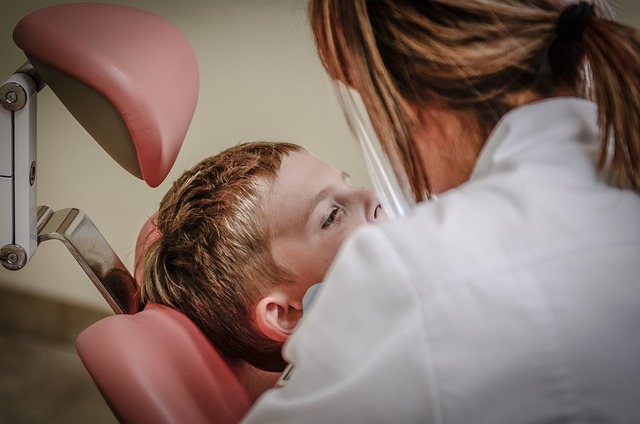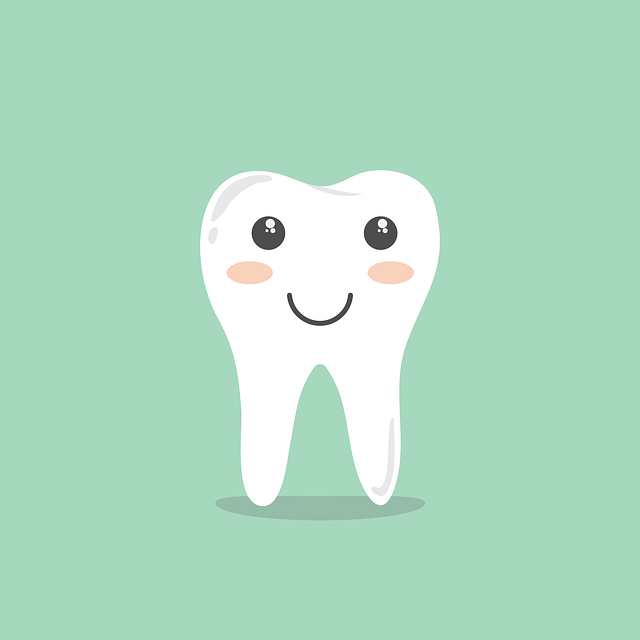Dealing with a Broken Permanent Retainer: Dental Solutions
Are you dealing with a broken permanent retainer? Don’t fret – we’ve got you covered! When it comes to dental solutions, it’s essential to be confident and knowledgeable about your options. In this article, we will guide you through the process of dealing with a broken permanent retainer, offering expert advice and practical solutions. So, sit back, relax, and let us help you regain that perfect smile with ease and efficiency.
1. Understanding the Role of a Permanent Retainer in Dental Health
Permanent retainers play a crucial role in maintaining dental health after orthodontic treatment. These thin wires are custom-fitted to the back of the teeth, typically in the lower jaw, and are designed to keep the teeth in their new positions. Unlike removable retainers, permanent retainers are bonded to the teeth and are not visible to others.
Here are a few key points to understand about the role of permanent retainers:
- Stability: One of the primary functions of a permanent retainer is to ensure the stability of the teeth. After braces or aligners have successfully straightened the teeth, there is a risk of them shifting back to their original positions. The retainer holds the teeth in place, preventing any unwanted movement.
- Long-term solution: Unlike removable retainers, which patients may forget to wear or misplace, permanent retainers provide a long-term solution. With proper care and regular dental visits, these retainers can last for several years, reducing the need for additional orthodontic treatment.
- Maintenance: Although permanent retainers require less maintenance than removable ones, it is still important to keep them clean. Regular brushing and flossing, along with dental check-ups, are necessary to ensure the retainers remain effective and do not cause any oral health issues.
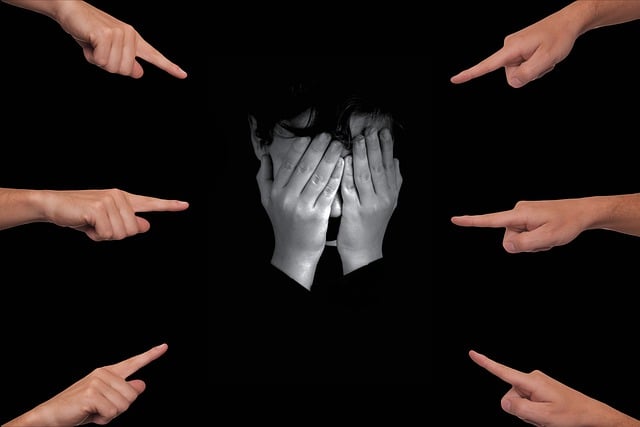
2. Identifying Common Issues with Permanent Retainers
is crucial for maintaining a healthy and functional smile. While these retainers are designed to be durable and long-lasting, they are not immune to certain problems. By being aware of these issues, you can address them promptly and ensure the longevity of your retainer.
Here are some common issues to look out for:
- Breakage: Permanent retainers can occasionally break or become loose due to external factors such as trauma or biting on hard foods. It is important to check for any signs of breakage or movement regularly, especially along the bonding points at the back of the teeth. If you notice any damage, it is crucial to visit your orthodontist for repair or replacement.
- Plaque and tartar buildup: Since permanent retainers are fixed to the teeth, they can accumulate plaque and tartar more easily compared to removable retainers. Regular brushing and flossing might not be sufficient to remove these deposits, so it is essential to schedule professional cleanings with your dentist or orthodontist to prevent decay and gum disease.
- Gum irritation: Some individuals may experience gum irritation or inflammation due to the presence of a permanent retainer. This can occur if the wire is too long or if it rubs against the gums. If you notice any discomfort or soreness, consult your orthodontist to adjust the retainer and alleviate the irritation.
By staying vigilant and addressing these common issues, you can ensure the effectiveness and longevity of your permanent retainer. Regular dental check-ups and maintaining good oral hygiene practices are essential for avoiding potential problems and enjoying the benefits of a healthy, well-aligned smile.

3. Effective Steps to Handle a Broken Permanent Retainer
When faced with a broken permanent retainer, it’s important to take immediate action to prevent further complications. Here are some effective steps you can follow:
1. Examine the damage: Carefully inspect the broken retainer to determine the extent of the damage. Look for any loose wires or detached brackets. Take note of any discomfort or pain caused by the broken retainer.
2. Contact your orthodontist: Reach out to your orthodontist as soon as possible to schedule an appointment. Inform them about the broken retainer and provide details about the damage. Your orthodontist will guide you on the next steps, which may involve repairing or replacing the retainer.
3. Avoid manipulating the retainer: Refrain from trying to fix the broken retainer on your own. Manipulating the wires or brackets without professional guidance can lead to further damage and discomfort. Trust the expertise of your orthodontist to ensure proper handling of the situation.

4. Exploring Dental Solutions for a Broken Permanent Retainer
When faced with a broken permanent retainer, it is important to explore dental solutions that can effectively address this issue. Here are some options to consider:
1. Schedule an appointment with your orthodontist: The first step is to consult with your orthodontist, who will assess the extent of the damage and recommend the most suitable solution. They have the expertise and knowledge to determine whether the retainer can be repaired or if a replacement is necessary.
2. Repairing the retainer: In some cases, a broken permanent retainer can be fixed. Your orthodontist may be able to repair it by using dental bonding or other techniques. This option is ideal if the damage is minimal and the retainer is still functioning effectively. However, please note that not all breakages can be repaired, and replacement may be the only viable solution.
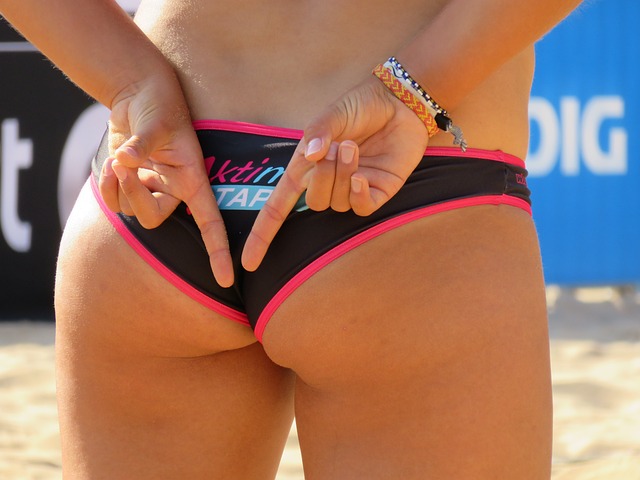
5. Consulting a Professional: When to Seek Dental Assistance
There are certain situations where it is essential to consult a dental professional. These instances include:
- Severe toothache: If you are experiencing intense and persistent pain in your teeth, it is important to seek dental assistance. A professional will be able to identify the underlying cause of the pain and provide appropriate treatment.
- Swelling or bleeding gums: If your gums are swollen, red, or bleeding without any apparent reason, it could be a sign of gum disease. A dental professional can examine your gums and recommend the necessary steps to prevent further complications.
- Broken or knocked-out tooth: Accidents happen, and if you have suffered trauma to your mouth resulting in a broken or knocked-out tooth, it is crucial to see a dentist as soon as possible. They may be able to save the tooth or provide suitable alternatives to restore your smile.
Additionally, it is recommended to consult a dental professional for regular check-ups and cleanings. These routine visits can help identify any dental issues early on and prevent them from becoming more serious. Dental professionals have the expertise and tools to ensure your oral health is well-maintained, providing advice on proper oral hygiene practices tailored to your specific needs. Remember, early detection and intervention can save you from potential pain, discomfort, and costly treatments down the road.
6. Maintaining Oral Health after Repairing a Broken Permanent Retainer
After repairing a broken permanent retainer, it is crucial to maintain oral health to ensure the longevity of the repair and overall oral hygiene. Here are some essential tips to help you maintain a healthy mouth:
- Brush your teeth regularly: Brushing your teeth at least twice a day with a soft-bristled toothbrush and fluoride toothpaste is crucial for maintaining oral health. Pay extra attention to the area around the repaired retainer to remove any plaque or food particles.
- Floss daily: Flossing is important to remove plaque and debris from between your teeth and around the retainer. Use a floss threader or specialized floss designed for braces to effectively clean around the wires and brackets.
- Use an antimicrobial mouthwash: Rinse with an antimicrobial mouthwash to help kill any bacteria in your mouth. This can help prevent tooth decay and keep your breath fresh.
- Avoid sticky and hard foods: Sticky and hard foods can damage your retainer or cause it to become loose. Steer clear of chewy candies, ice, hard nuts, and sticky snacks to ensure the stability of your retainer.
Additionally, it is important to schedule regular dental check-ups and cleanings to monitor the condition of your repaired retainer and overall oral health. Your dentist will be able to identify any issues early on and provide appropriate treatment if needed. By following these tips, you can maintain optimal oral health and ensure the longevity of your repaired permanent retainer.
7. Practical Tips for Preventing Future Damage to Permanent Retainers
When it comes to maintaining the longevity and effectiveness of your permanent retainers, there are several practical tips you can follow. By incorporating these habits into your daily routine, you can minimize the risk of damage and ensure that your retainers continue to serve their purpose for years to come.
- Be mindful of your diet: Avoid consuming hard or sticky foods that can potentially damage your retainers. This includes items like chewing gum, hard candies, and crunchy snacks. Opt for softer alternatives and cut your food into smaller, manageable pieces if necessary.
- Practice proper oral hygiene: Regularly brush and floss your teeth to maintain good oral health. Be cautious when cleaning around your permanent retainers, using a soft-bristled toothbrush and dental floss threaders to remove any debris or plaque that may accumulate.
- Avoid excessive force: Refrain from biting down on hard objects or using your teeth to open packages, as this can exert unnecessary pressure on your retainers. Additionally, avoid habits like nail-biting or chewing on pens, as these can also lead to damage.
Furthermore, it is essential to schedule regular check-ups with your orthodontist or dentist. They can assess the condition of your permanent retainers and make any necessary adjustments or repairs. By following these practical tips and seeking professional guidance, you can ensure the longevity and effectiveness of your permanent retainers, keeping your smile in optimal shape.
Frequently Asked Questions
Q: What is a permanent retainer?
A: A permanent retainer is a fixed orthodontic device that is bonded to the back of your teeth to help maintain the alignment achieved through orthodontic treatment.
Q: How long does a permanent retainer last?
A: A properly maintained permanent retainer can last for several years, and in some cases, even a lifetime.
Q: What can cause a permanent retainer to break?
A: Permanent retainers can break due to various reasons such as biting into hard or sticky foods, accidents, teeth grinding, or simply due to normal wear and tear over time.
Q: What should I do if my permanent retainer breaks?
A: If your permanent retainer breaks, it is important to contact your orthodontist or dentist as soon as possible. They will evaluate the situation and provide you with appropriate guidance on how to proceed.
Q: Can I fix a broken permanent retainer on my own?
A: It is not recommended to try fixing a broken permanent retainer on your own. This is because it requires professional expertise and specialized equipment to ensure the retainer is properly repaired or replaced.
Q: What are the dental solutions for dealing with a broken permanent retainer?
A: The dental solutions for dealing with a broken permanent retainer may include repairing the existing retainer, replacing the broken portion, or completely replacing the retainer with a new one.
Q: How is a broken permanent retainer repaired?
A: The repair process for a broken permanent retainer typically involves using dental adhesive to reattach the loose or broken component. In some cases, the retainer may need to be removed and replaced entirely.
Q: Can a broken permanent retainer be replaced?
A: Yes, a broken permanent retainer can be replaced. Your orthodontist or dentist will assess the situation and provide you with the best options for replacement, including choosing between a fixed or removable retainer.
Q: How much does it cost to repair or replace a broken permanent retainer?
A: The cost of repairing or replacing a broken permanent retainer can vary depending on several factors such as the extent of the damage, the type of retainer, and the location of the dental practice. It is best to consult with your orthodontist or dentist to get an accurate estimate.
Q: How can I prevent my permanent retainer from breaking in the future?
A: To prevent your permanent retainer from breaking in the future, it is important to avoid biting into hard or sticky foods, wear a mouthguard during physical activities, practice good oral hygiene, and attend regular dental check-ups to ensure the retainer is properly maintained.
To Wrap It Up
In conclusion, dealing with a broken permanent retainer can be a frustrating situation, but rest assured, there are effective dental solutions available. By promptly seeking professional help, you can ensure the longevity of your retainer and maintain a healthy smile.
Key takeaways from this article include the importance of regular dental check-ups to detect any issues with your retainer, the significance of addressing a broken retainer promptly to prevent further complications, and the various solutions available such as repair or replacement.
Remember, a broken permanent retainer does not have to disrupt your oral health journey. With the right dental care and guidance, you can overcome this obstacle and continue to enjoy the benefits of a well-maintained retainer. Stay proactive, stay informed, and keep smiling confidently.

